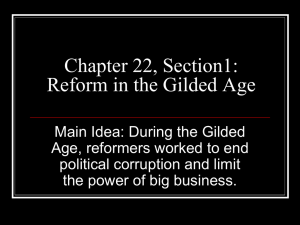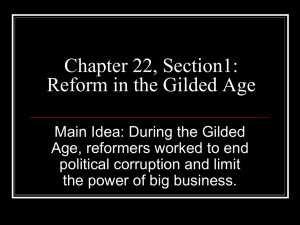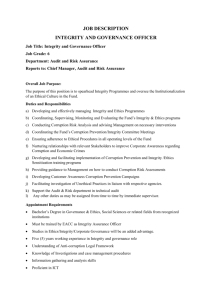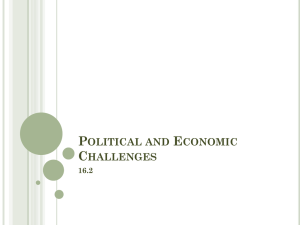AMDISA conference - Nepal Administrative Staff College
advertisement
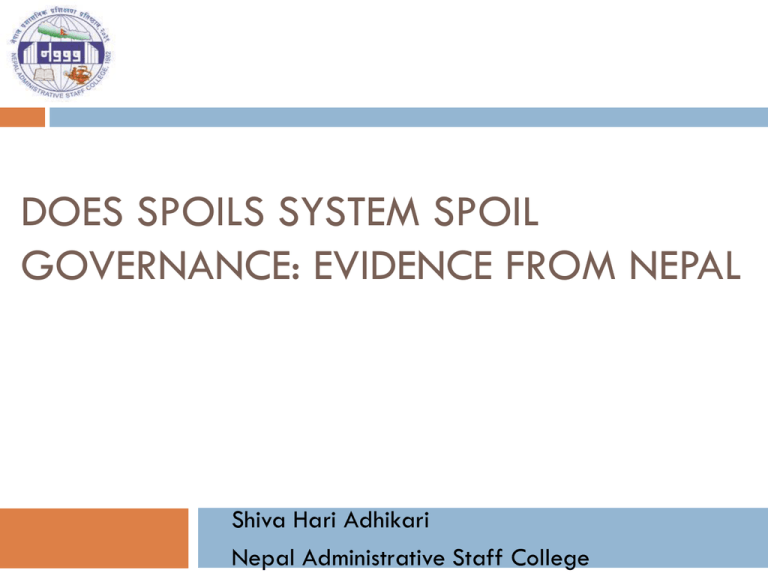
DOES SPOILS SYSTEM SPOIL GOVERNANCE: EVIDENCE FROM NEPAL Shiva Hari Adhikari Nepal Administrative Staff College Introduction Establishes and promotes informal governance (Brinkerhoff and Goldsmith, 2002) Greater risk of despoiling the public fund for personal purpose (Friedrich, 1937) Applies rules with partiality and some citizens get preferential treatment Effective in implementing the decisions of government Introduction Creates unauthorized transactions: developed or, even, in not fully developed spoils system Establishes patron-client relation/network Holds control over policy decision and implementation Encourages favouritism, nepotism and corrupt practices Spoils system Patronage Chooses public officials on a political and not on a merit basis Creates established relation or networks Governance Works for mutual material advantage Nepal Recently experienced political and socioeconomic changes Governance has dual character: (In)formal They are less easily separable Chakari: originated during Rana regime Public Service Commission,1951, AntiCorruption Act, 1952, Civil Service Act, 1957, and Commission for Controlling Abuse of Authority, 1977 Nepal Norwegian Agency for Development Cooperation, 2011 Informal practices more prevalent Corruption Bureaucratic and legislative norms to clientelism and patronage Dix, Hussmann, and Walton, 2012 Patronage system is apparent in society, economy and politics Corruption Objectives The primary objective of this study is to test the relationship between spoils system and governance. The objectives are: to seek the relationship between spoils and corruption, and to evaluate the effect of spoils in the governance system. Research Question/Hypothesis R.Q.: Does spoils system spoil governance? Hypothesis 1: Spoils system has positive significant relation with corruption Hypothesis 2: Spoils recruitment and promotion worsens the governance Data and Model Challenging task to measure governance and corruption For more precise measure controlling for behaviour and attitude is needed. Research Design: descriptive as well as explanatory Sample size (N) = 273: 106 (public officials), and 167 (students) Peer review and pretest of questionnaire Data and Model Data collection and processing: 380 distributed, 324 returned (51 have quitted or incomplete), 273 fully complete and usable, 85% return rate, 72% response rate Data analysis: Factor analysis, reliability test and regression analysis Summary of Variables Type of variable Name of variable Number of items Measurement included Dependent Poor governance (newly created) Corruption (newly created) 5 Future intention of bribery Yes/no question Nominal (Yes =1) Political affiliation Yes/no question Nominal (Yes =1) Five response Likert Scale 4 Five response Likert Scale Independent Spoils system (newly created) 4 Five response Likert Scale Control Experience of bribery Yes/no question Nominal (Yes =1) Family member a government Yes/no question Nominal (Yes =1) employee Family member a politician Yes/no question Nominal (Yes =1) Variables and Their Descriptions Variable Statements incorporated to create new variable and its index Spoils system Top executives are appointed as per personal connections with political leaders. Top executives are promoted as per personal connections with political leaders. Personal relationship matters in promotion. Appointments to key positions are influenced by politics. Poor governance Service receivers get poor service with less choice. Service delivery mechanism is biased to benefit only a few. Government regulations and procedures are not transparent. Citizens do not get proper and timely services that they are entitled to. Government agencies are not accountable for the application of regulations and procedures. Corruption Corruption is widespread in our country. Salaries are supplemented with bribes and kickbacks. Civil servants involved in corrupt practices are not punished. Corruption is reinforced by culture and tradition. Statistical Analysis Results DV: Corruption Standardized coefficients DV: Poor governance Sig. Standardized coefficients t Spoils system*** Experience of bribery [Yes=1] Future intention of bribery [Yes=1] Family member government employee [Yes=1] Family member a politician [Yes=1] Political affiliation [Yes=1] R-Square Adjusted R-Square F Value Durbin-Watson value Sig. t .458 8.41 .000 .534 10.245 .000 .060 1.097 .273 .071 1.342 .181 .109 1.968 .051 .085 1.608 .109 -.021 -.370 .712 .013 .250 .803 .026 .437 .662 .058 1.031 .304 -.009 -.158 .875 -.028 -.510 .610 .237 .302 .220 .286 13.783 (p < .0001) 19.191 (p < .0001) 1.689 1.611 Interpretation and Discussion Curbing corruption and improving the governance: Local, regional and global agenda Good governance: extremely important but not possible if there is spoils recruitment and promotion. Although the spoils system causes corruption, the adoption of spoils system might be effective in implementing the decisions of government. Positive effect of spoils in corruption and poor governance should be carefully interpreted. Interpretation and Discussion The governance system in Nepal is not satisfactory Other loopholes causing corruption and poor governance regarding the spoils system Formal vs informal governance Legal mechanisms vs implementation/rule of law Purely merit based vs spoils within merit
